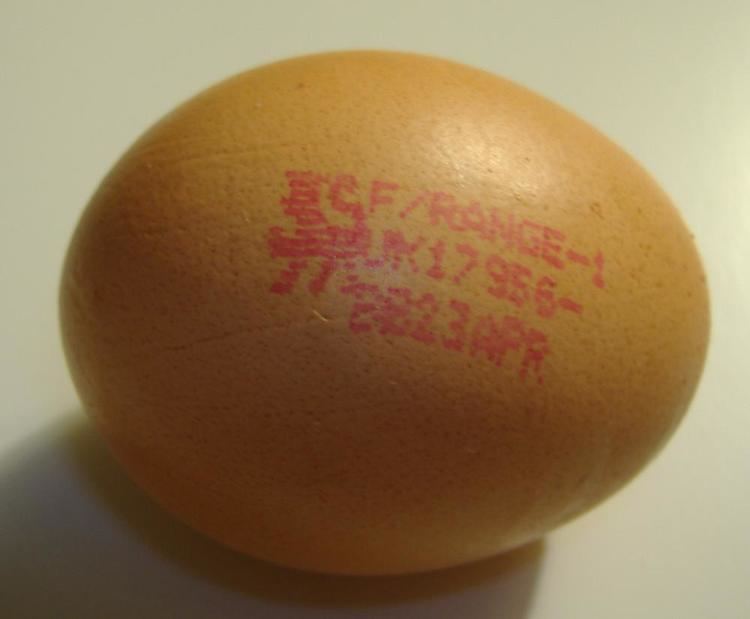 | ||
Egg marking is a form of egg labeling that includes an egg code stamped on the egg itself. In the EU there is a producer code regulated by law since 2004. It allows consumers to distinguish free range eggs and organic farming eggs from the industrial caged hen production.
Contents
Egg mark contents
An egg mark may contain a number of information parts - in the EU only the producer code is required. Additional information may be printed along with the date of production being the most common to find. Other information may contain the method of production especially in the non-EU world where the numbered levels do not apply.
Note that egg labeling is used worldwide but mostly in the form of egg carton labels. In most countries there are legal definitions on the designation of the egg size, production method, packager identification and best-before dates. As there is more space on the carton there has been no tendency to create an egg code that is seen on the stamps used for egg marking.
The European Union has defined an egg code that consists of
The egg stamp is required in the EU on all class A eggs unless these are sold directly on the farm.
Method of production
The first number of the egg code defines four levels of production quality in decreasing order - the requirements on organic farming eggs extend on the requirements of free range eggs.
0 = organic egg production1 = free-range eggs2 = deep litter indoor housing3 = cage farmingIn the European Union these levels have strict minimum requirements:
Country code
The country code follows the ISO two-letter country codes as known from country code top-level domains. This includes
Registration number
In most countries the registration number starts with a region code where the egg production facilities are situated:
Note that a producer with multiple barns will have to register each barn separately.
Criticism
There have been multiple occurrences of the producer code being forged - a common concept is to have multiple barns on the same farm with some having efficient caged hen production and one with an organic egg production code. Eggs are then silently moved to the other barn giving an egg code as if they were from organic production allowing for a higher price on the market. In Lower Saxony (Germany) the state attorney has accused 150 farmers in a year.
The mark on organic egg production as level 0 might indicate that there is nothing better than that. However it does not indicate sustainable agriculture where hens are fed from the organic farm alone. Also species-appropriate husbandry would require more space per hen or a lower number of hens per barn (or even have a cock around to calm down quarrels). Instead there are higher organic farming standards (e.g. Demeter or Bioland) that can not be expressed in the established egg code system. The difference in space per animal is limited between levels 1 and 0:
